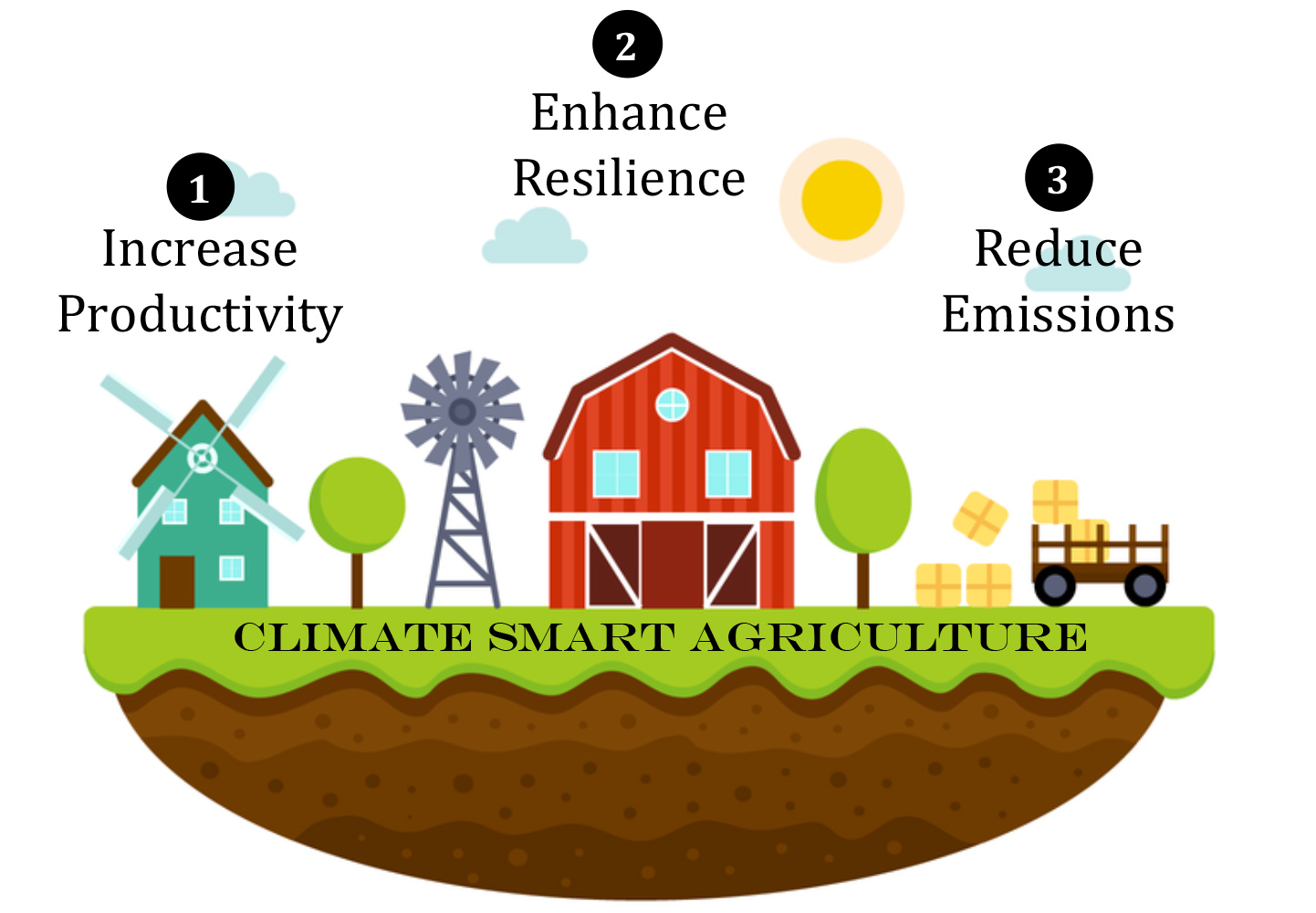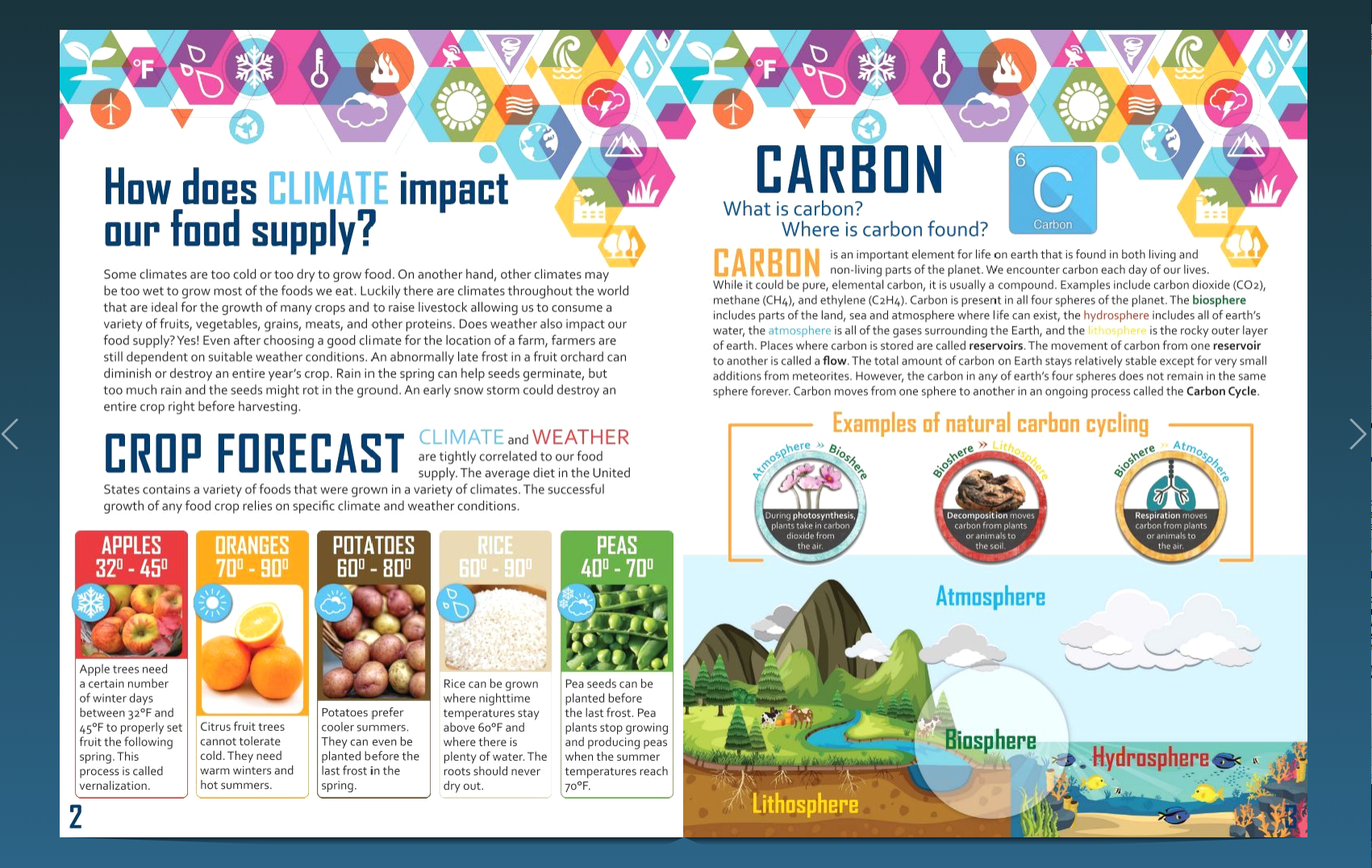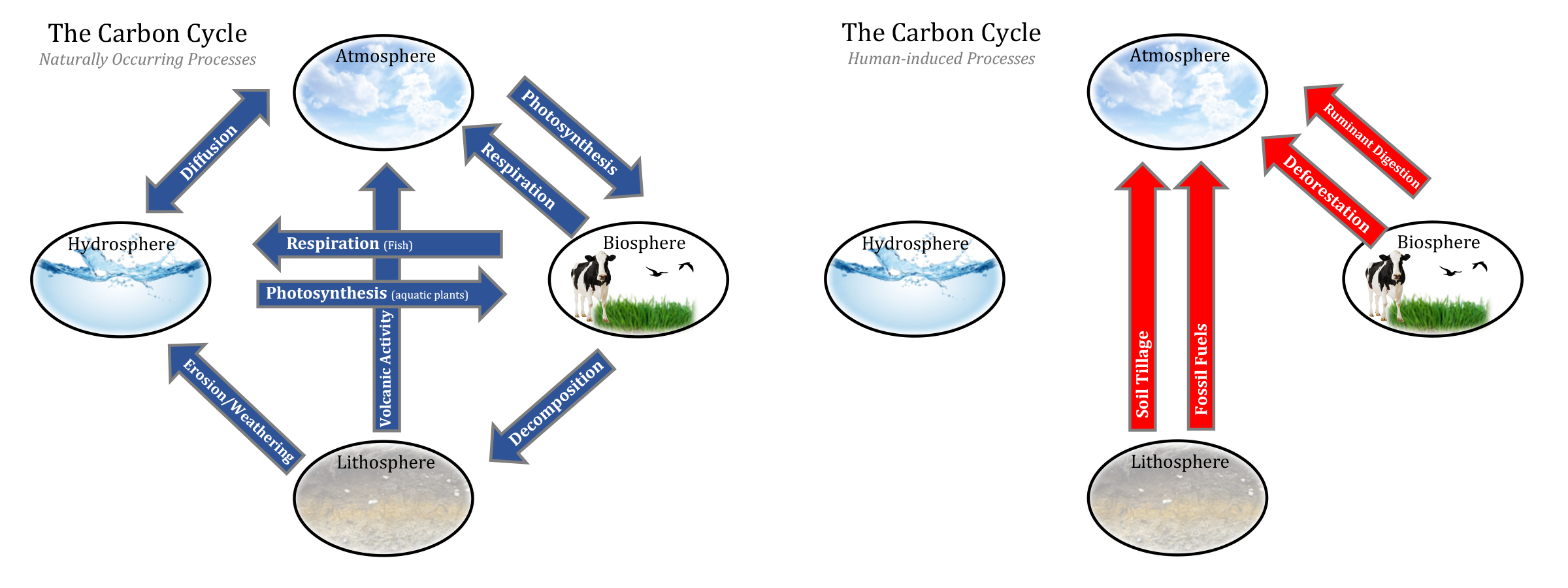The Carbon Cycle and Climate Smart Agriculture
Students explore the carbon cycle, evaluate natural and human-induced activities that drive the carbon cycle, and discover climate smart agricultural practices that can be used to produce our food.

Background
Lesson Activities
Recommended Companion Resources
Credits
Author
Andrea Gardner | National Center for Agricultural Literacy (NCAL)
Sources
- https://www.epa.gov/ghgemissions/sources-greenhouse-gas-emissions
- https://en.m.wikipedia.org/wiki/Climate_change_and_agriculture
- https://www.futurelearn.com/courses/climate-smart-agriculture/0/steps/26565
- https://www.cnbc.com/2018/09/17/un-report-shows-climate-change-effect-on-farming.html
- https://climate.nasa.gov/
- https://www.nrcs.usda.gov/Internet/FSE_DOCUMENTS/nrcseprd1318196.pdf
- https://earthobservatory.nasa.gov/features/CarbonCycle
Standards
National Content Area Standards
- Social Studies – Geography
- APHG Topic 5.10: Consequences of Agricultural Practices
- IMP-5.A.1: Environmental effects of agricultural land use include pollution, land cover change, desertification, soil salinization, and conservation efforts.
- APHG Topic 5.10: Consequences of Agricultural Practices
- Science
- HS-ESS2: Earth's Systems
- HS-ESS2-6: Develop a quantitative model to describe the cycling of carbon among the hydrosphere, atmosphere, geosphere, and biosphere.
- HS-ESS3: Earth and Human Activity
- HS-ESS3-4: Evaluate or refine a technological solution that reduces impacts of human activities on natural systems.
- APES Unit 1: Introduction to Ecosystems
- ERT-1.D The Carbon Cycle: Explain the steps and reservoir interactions in the carbon cycle.
- HS-ESS2: Earth's Systems


